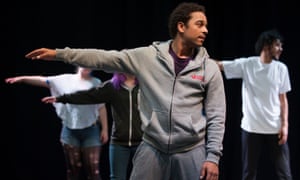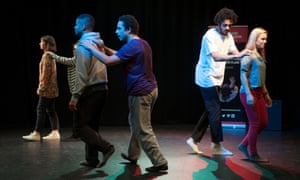Things are not going well in the NHS right now. It is under sustained attack day after day; the media bad-mouths it, while the people who work for it are being asked to do more and more with fewer and fewer resources.
In my 15 years of study and training, I have watched cuts immiserate the services we can offer children and their parents all over the country. Fewer funded paediatric nurse training spots; local closures leading to clogged emergency departments; and £80bn slashed from mental health services resulting in ever more troubled young people occupying acute hospital beds, because there’s simply nowhere else for them to go.
Working in a health service under pressure – one that is low in finances, low in staff and low in morale – is hard. And things are only going to get worse. The current political climate actively pits health workers and patients against each other, the opposite of what caring relationships are supposed to look like. Under this kind of pressure, it’s not only the patients who need healing, it’s also the staff.
I felt this myself. I would see my colleagues, hungry and thirsty from lack of breaks with circles under their eyes, struggle to do their jobs. Being in hospital can be scary and alienating for sick children at the best of times – how much worse when the staff looking after them are too tired and busy even to smile?
I decided to do something about it. Barnet Bopping is a pilot project I developed with colleagues that brings dance to the paediatric ward of Barnet hospital, in north London. The aim is to help patients, parents and staff feel happier, healthier, less stressed and more connected by doing physical activity together that’s mood lifting and fun.
One morning, we gathered some of the kids and staff in the playroom and I asked a friend – who happens to be a nurse on the ward – to lead a hip-hop dance class. At first it felt a bit awkward; here we were, in the middle of the working day, my colleagues and I, swaying our hips with the consultant. And in front of the parents. But with every new move, and with every song, we all got more and more into it. Before long we forgot who we were, and even where we were. It didn’t matter whether we were a doctor, nurse, patient, parent or cleaner – all that mattered was the music. By the end, the atmosphere on the ward was really, well, happy.
I noticed how things changed after that. The boundaries between the nurses and doctors were gone. People smiled more. The team communicated better. It made us all wonder why we didn’t do things like that more often.
On its own this will not fix the NHS. But it is a way for us, in our local general hospital, to take matters back into our own hands, to resist the destruction of our health service and try to offer the best care we can to our patients.
Wellbeing should be for all of us. Health workers operate under huge stress, all while feeling as if we aren’t really doing justice to our patients. We need take care of each other – health workers and patients alike. Whether it’s standing up for patient safety or being creative at work, we stand with our patients. Cuts or no cuts, this is the kind of spirit that hasn’t yet been crushed in the NHS.
If you would like to contribute to our Blood, sweat and tears series which is about memorable moments in a healthcare career, please read our guidelines and get in touch by emailing sarah.johnson@theguardian.com.
Join the Healthcare Professionals Network to read more pieces like this. And follow us on Twitter (@GdnHealthcare) to keep up with the latest healthcare news and views.
Working for the NHS was miserable so I started dance classes on my ward

